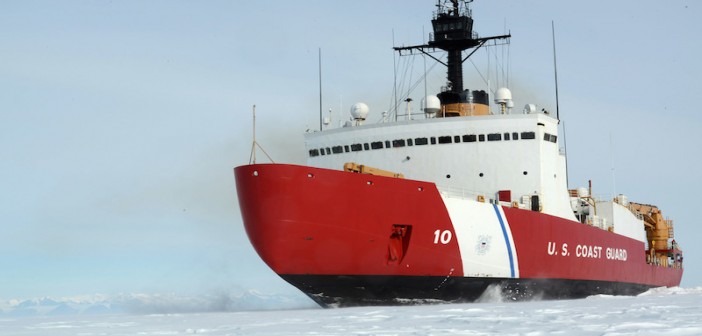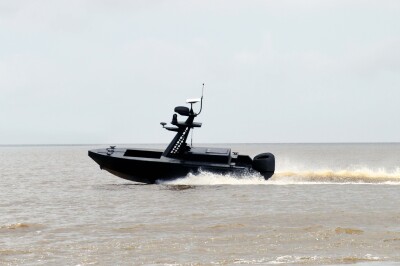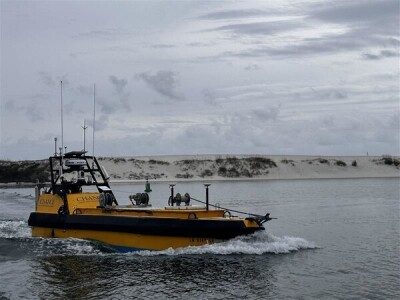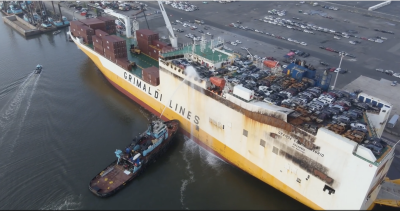A block buy program to build four new heavy icebreakers is the best plan for a new Coast Guard polar fleet, ensuring U.S. presence in the high latitudes – and bringing the average cost per ship below $1 billion, according to a report from the National Academies of Science, Engineering and Medicine.
The report from an expert committee, sponsored by the Coast Guard and ordered up by Congress, contends it makes more sense to design and build the four heavy icebreakers that would come in at an estimated average cost of $791 million each.
With a construction start in the second half of 2019, the first new ship could be commissioned in mid-2024 and the second a year later. That would still be cutting close to the expected operational life of the 399’ Polar Star, the Coast Guard’s sole heavy icebreaker dating from 1976.
The academies committee chairman, retired Navy Rear Adm. Richard D. West, said decades of delay are coming to a head as climate changes open sea access in the polar regions.
“For more than 30 years, studies have underscored the need for U.S. icebreakers to maintain presence, sovereignty, leadership, and research capacity, but the nation has failed to make the recommended investments, leaving the U.S. ill-equipped to protect its interests, while other nations have mobilized to expand their access to ice-covered regions,” West said in releasing the report.
“Given the strong warming and related environmental changes occurring in both the Arctic and Antarctic, the deficiencies in U.S. icebreaking capacity have become more critical,” he said.
The committee’s report echoes Coast Guard leadership in dismissing the idea of leasing icebreakers as impractical and insufficient to meet the nation’s needs. But it also breaks with the official thinking to date that three heavy and three medium icebreakers should make up the future fleet.
“The committee’s recommendation is for a single class of polar icebreaker with heavy icebreaking capability. Proceeding with a single class means that only one design will be needed, which will provide cost savings,” the report states. “The committee has found that the fourth heavy icebreaker could be built for a lower cost than the lead ship of a medium icebreaker class.”
The 420’ medium icebreaker Healy is expected to remain in service until at least 2030, the report notes. With such a fleet home ported at Seattle, the Coast Guard could maintain at least three icebreakers in the Arctic, and one dedicated to Antarctica, with redundancy in the event of a breakdown.

The Coast Guard medium icebreaker Healy breaks ice in support of scientific research in the Arctic Ocean. Coast Guard photo.
“In addition, if further military presence is desired in the Arctic, USCG could consider ice-strengthening the ninth national security cutter,” the report says.
With four new icebreakers operational by the late 2020s, the Coast Guard “can reasonably be expected to plan for more distant time horizons,” and assess the new ships’ performance and whether more icebreaking capacity is needed, the report says.
The four new icebreakers should be planned as a block buy program, allowing for volume purchase of materials with long lead times, and a fixed price incentive fee construction contract as used by the Navy, the committee recommends.
Among other findings and recommendations, the committee suggests:
Mission requirements indicate the future heavy icebreaker design dimensions should be around 433’x89’.
“All-in” cost of the first heavy icebreaker will be around $983 million, but with a block buy program and others savings, like reducing some mil-spec requirements, the average cost over building all four vessels could be brought down to $791 million each.
All four ships should be designed as “science-ready,” at a cost of $10 million to $20 million per ship, to accommodate polar research missions. The fourth ship could be built as fully science capable at an additional cost of $20 million to $30 million. All told, that would still be cheaper than designing a building a dedicated medium icebreaker for science missions, the role now fulfilled by the Healy.
Finally, the report stresses this design and construction timeline is cutting it close, with the aged Polar Star needing much work – and spare parts from its laid-up sister ship, Polar Sea – to stay in service over the coming years until two new heavy icebreakers are complete in the mid-2020s. An enhanced maintenance program (EMP) is a must.
“The necessary repairs could be performed in conjunction with the ship’s current yearly dry-docking schedule within existing annual expenditures, estimated to average $5 million. In particular, the EMP would require improvements in the ship’s operating systems, sanitary system, evaporators, main propulsion systems, and controllable pitch propellers,” the report concludes. “In the committee’s judgment, the EMP could be accomplished within USCG’s average annual repair expenditures for the Polar Star, which currently range between $2 million and $9 million.”





